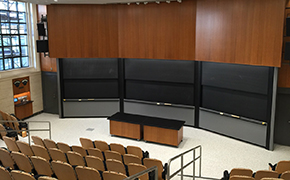Instructor Insights pages are part of the OCW Educator initiative, which seeks to enhance the value of OCW for educators.
Course Overview
This page focuses on the course 8.06 Quantum Physics III as it was taught by Professor Aram Harrow in Spring 2016.
This course is a continuation of 8.05 Quantum Physics II. Topics include units, time-independent approximation methods, the structure of one- and two-electron atoms, charged particles in a magnetic field and time-dependent perturbation theory. Students research and write a paper on a topic related to the content of 8.05 and 8.06.
Course Outcomes
Course Goals for Students
- Interpret and analyze a wide range of quantum mechanical systems using both exact analytic techniques and various approximation methods.
- Gain an introduction to important model systems studied in contemporary physics, including white dwarf stars, two dimensional electron systems, the fine structure of Hydrogen, lasers, and particle scattering.
Curriculum Information
Prerequisites
Requirements Satisfied
CI-M ![]()
Offered
Every spring semester
I’ve to come to realize there are three things I need to teach related to each topic: the physical principle, the technique related to the principle, and an application of the technique.
— Aram Harrow
In the following pages, Aram Harrow describes various aspects of how he teaches 8.06 Quantum Physics III.
Student Information

Breakdown by Year
Mostly juniors
Breakdown by Major
Mostly physics and math majors
Assessment
Grade Breakdown
The students' grades were based on the following activities:
 25% Problem Sets
25% Problem Sets 15% Midterm
15% Midterm 25% Term Paper
25% Term Paper 35% Final Exam
35% Final ExamInstructor Insights on Assessment
Please see Prof. Aram Harrow’s instructor insights about providing students with feedback on their writing.
How Student Time Was Spent
During an average week, students were expected to spend 12 hours on the course, roughly divided as follows:
Lecture
Met 2 times per week for 1.5 hours per session; 27 sessions total.
Recitation
Met 2 times per week for 1 hour per session; 25 sessions total.
Out of Class
- Problem sets
- Term paper
- Exam preparation


 Room 1 of 2
Room 1 of 2 
